How many Leica photographers does it take to change a light bulb? Answer four: one to change the bulb, two to argue whether to photograph the occasion in film or digital and one to push the wheelbarrow full of M-lenses they own. Does the joke ring true? For many photographers, it can be hard to resist adding yet more lenses to their collection. But isn’t a two-lens kit all you really need?
The journey to a two-lens kit
I recently described my dive into the shallow end of the Leica rangefinder lido. I purchased an understated à la carte M240, followed, after some agonizing, by a 35mm Summilux. Congratulating myself on assembling this handsome, pre-owned starter kit, I set about taking photos. But at the back of my mind, I was also thinking about other lenses I might acquire down the road.
For me, researching a potential purchase, especially an expensive one, is half the fun of acquiring a new item. So, while enjoying the M-lens I already owned, I was enjoying learning about lenses I might eventually own. But, would it be better to head in the direction of a shorter or longer focal length next, and how many more lenses did I really need?
The only times I had wished I could change lenses on my Leica Q2 had been when I wanted to get closer to a subject. Although a fan of digital zooming, I am now in possession of a rangefinder camera that allows lens changes. Shouldn’t I, therefore, take full advantage of that and add a longer focal length lens to my kit?
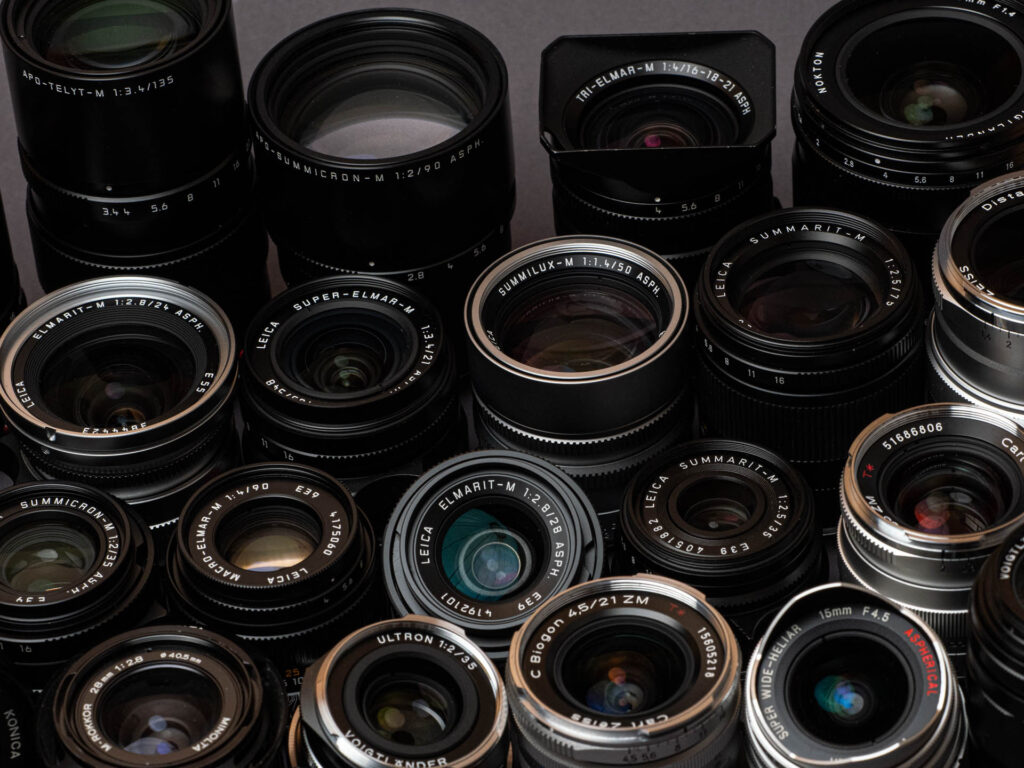
On the other hand, choosing a wider-angle lens would also be a reasonable option, especially for architectural photography. However, so far, the 35mm field of view has nicely catered to my landscape and architectural photography interests. I felt no urgent need to plug a gap in that department. Furthermore, experienced photographers say an external viewfinder is required to correctly frame a super-wide lens, such as a 21mm. I am a stickler for sticking to the rangefinder viewfinder and focusing mechanism, and so wary of such sacrilege.
A longer focal length lens it is then
I therefore narrowed my search to longer focal lengths: 75mm, 90mm and 135mm. In the end, I judged the spread from 35mm to 90mm and above too wide. I had also heard of rangefinder focusing challenges with these long lenses. Since I would be foregoing the common 50mm focal length, I plumped for 75mm. It seemed nicely differentiated from 35mm but not too much longer than 50mm.
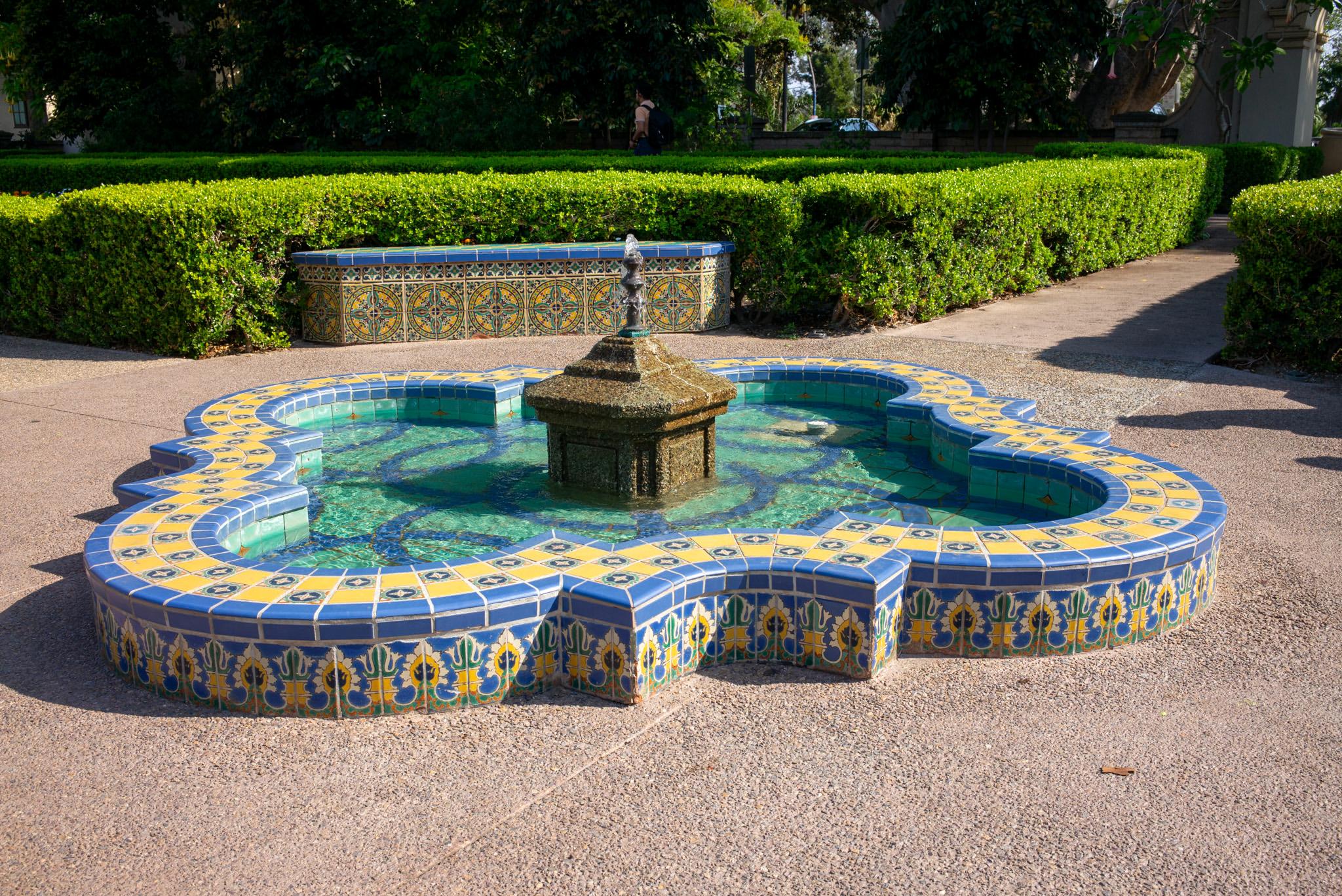

Those of you who read my earlier article might recall my strong preference for silver-finish lenses. This is motivated by the aesthetics of my understated silver M240. It was, therefore, front of mind as I began to survey the 75mm lens landscape. This criterion sharply narrowed the field!
A 75mm Summicron would have been great, but the silver version was a limited edition. They are now apparently as rare as hen’s teeth. A Voigtlander 75mm f/1.5 would be much more accessible, but a recent review put the kibosh on that.
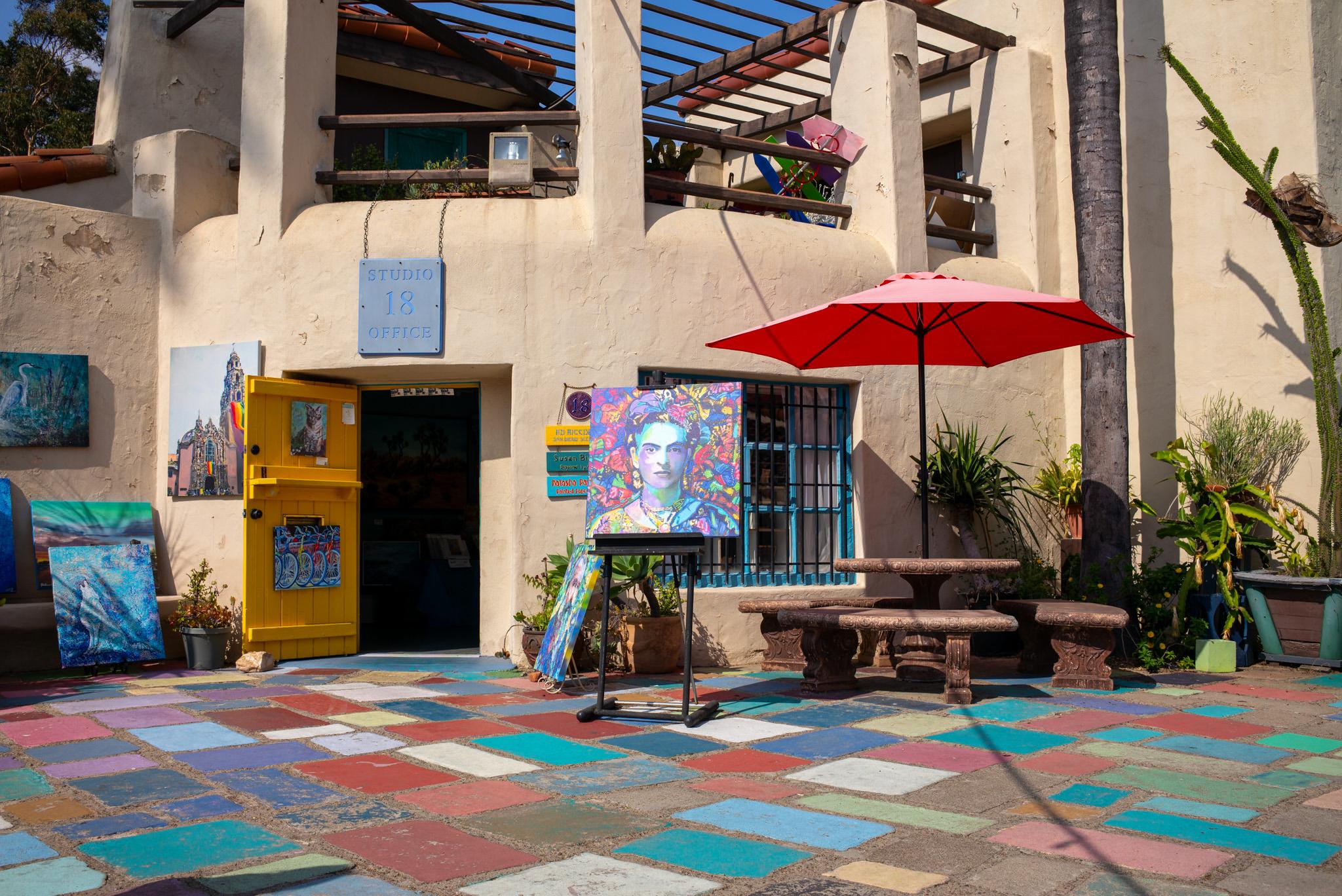

Since the longer focal length would bring with it a narrower depth of field anyway, did I really need a very fast 75mm lens?
Eventually, my analysis brought me to a very specific target: a used silver Leica 75mm Summarit f/2.4.
Summarit lenses come and go
As I read about this lens, I learned that the highly regarded Summarit line had been released and then discontinued by Leica within about five years. How unfortunate; reviewers appeared to rate the lenses highly, widely regretting their discontinuation. The 75mm f/2.4 Summarit was said to deliver sharp images at all focal lengths and, for Leica, to be reasonably priced. In fact, PCMag rated it as “Outstanding” and a PC Editor’s Choice.
The lens sounded like a great option for a two-lens kit. I found examples for sale at a Leica Store in Berlin, on eBay, and at several US outlets. But before buying one, I wanted to confirm that I could focus it successfully.


Macfilos to the rescue.
A friend in need is a friend indeed
Through the site, I had been introduced to Dirk Saeger. Based in Germany, Dirk is a photographer and author of several recent Macfilos articles, one of which was wildly successful. As a regular visitor to California, where I live, he soon found an opportunity for us to meet in person. We will share more about our rendezvous in a future article, but it resolved two key issues for me.
Firstly, Dirk brought along an M-camera fitted with a -2.0 diopter adjustment lens. Through his viewfinder, I could see a perfectly sharp scene. Bingo! As mentioned in that earlier article, I had found the process of determining the correct diopter strength thoroughly confusing. I now knew what to order. Et voilà; I can focus my rangefinder without wearing specs.
A short telephoto lens comes in handy when you can’t zoom with your feet
In addition, Dirk brought along a silver 75mm Leica Summarit f/2.4 lens. Fitted to my camera, it enabled me to focus the lens and produce sharp images. Success! I was now comfortable buying one for myself.
In an article discussing the importance of community for brain health, I had previously described Macfilos as a virtual community. Here was a concrete example of community support in action, albeit real rather than virtual.
A Summilux + Summarit two-lens kit
Courtesy of eBay, I am now the proud owner of a beautiful silver 75mm Summarit lens in superb condition. I also possess a versatile, two-lens kit covering a large percentage of my photographic interests.
Throughout the article, I have included photographs taken with each lens. I have incorporated side-by-side comparisons taken from the same vantage point. Usually, I would crop and apply Lightroom geometry controls to these images to optimize framing. In these cases, I used images directly from the camera to show the two different perspectives.
So, when would I use a 75mm lens in a two-lens kit? I envisaged two scenarios.
Firstly, photographing distant subjects which you cannot enlarge by zooming with your feet. These could be musicians on a stage or seen through a crowd. Or, they could be objects high above, behind a fence, across a river, or on a sailboat racing by. Here are some examples.
Another situation where getting physically close to the action was not possible. A 75mm lens made all the difference
I was able to capture sharp, high-resolution images of musical performers even when unable to approach the concert stage. Similarly, as illustrated earlier in the article, I could photograph smiling crew members on passing sailboats.
Bokeh balls
The second scenario involves achieving a narrow depth of field through a combination of wide aperture and telephoto compression. Here are some examples.
Late summer flowers, fruits and shrubs
Wide open (at f/2.4), it clearly separates the subject and background and produces lovely bokeh balls. I have yet to shoot portraits, but I bet it delivers crisp images of people, standing out from their backgrounds. According to online depth-of-field calculators, with a subject distance of 70cm, at f/2.4, the DOF is 1.1 cm. Compare that to a 50mm f/1.4 Summilux, with a calculated depth of field of 1.5 cm.
The 75mm Summarit therefore excels in both scenarios. I am extremely impressed with it; it is small, light and delivers extremely sharp images.
My two-lens kit
Together with the 35mm Summilux, I believe I have an extremely versatile set-up.
I usually travel with a Leica Q2, but on a forthcoming trip South of the Equator, I am tempted to take this kit with me instead. It is fun to use, beautiful to look at, sure to be a talking point, and delivers stellar images. What’s not to like?
Are you addicted to acquiring lenses? How many do you own? Do they all spark joy? Have you ever considered a Marie Kondo-inspired rationalization of your collection? Confession time! Let us know in the comments below.
Read more from the author
Join the Macfilos subscriber mailing list
Our thrice-a-week email service has been polished up and improved. Why not subscribe, using the button below to add yourself to the mailing list? You will never miss a Macfilos post again. Emails are sent on Mondays, Wednesdays, and Fridays at 8 pm GMT. Macfilos is a non-commercial site and your address will be used only for communications from the editorial team. We will never sell or allow third parties to use the list. Furthermore, you can unsubscribe at any time simply by clicking a button on any email.

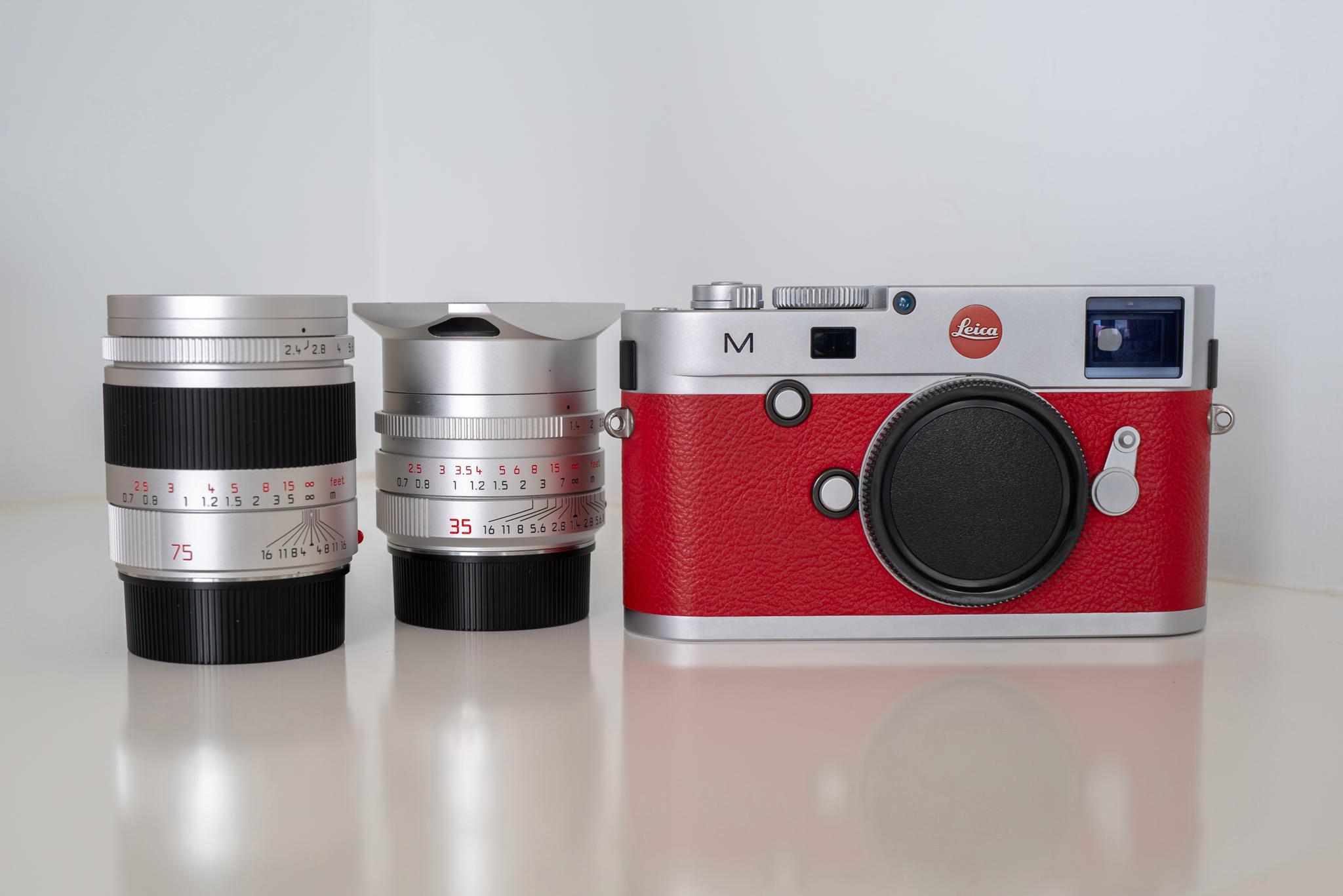
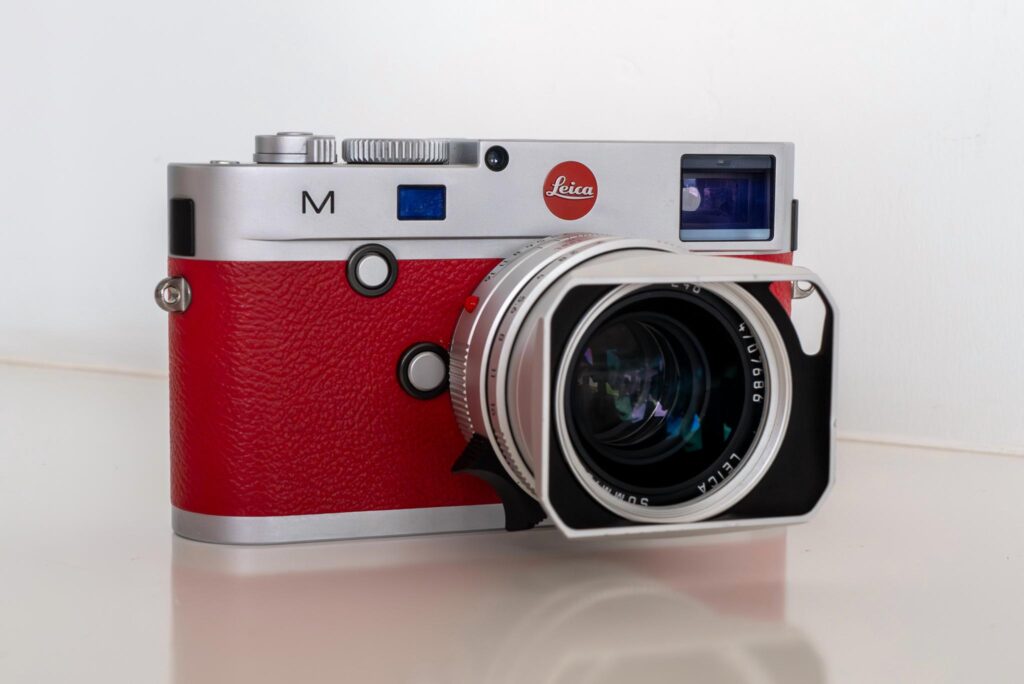





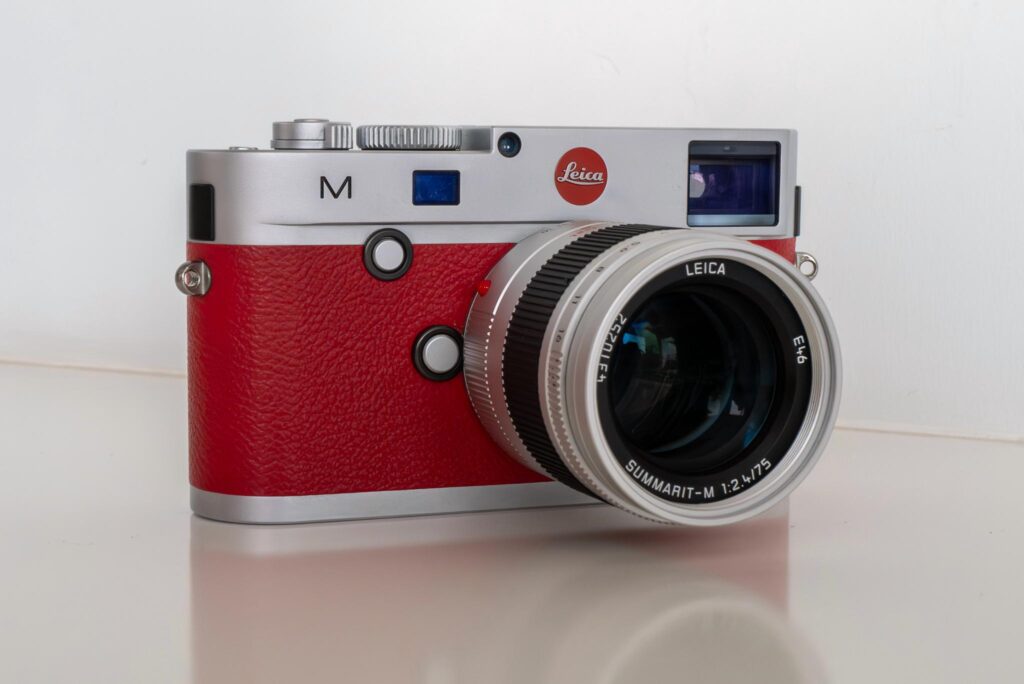










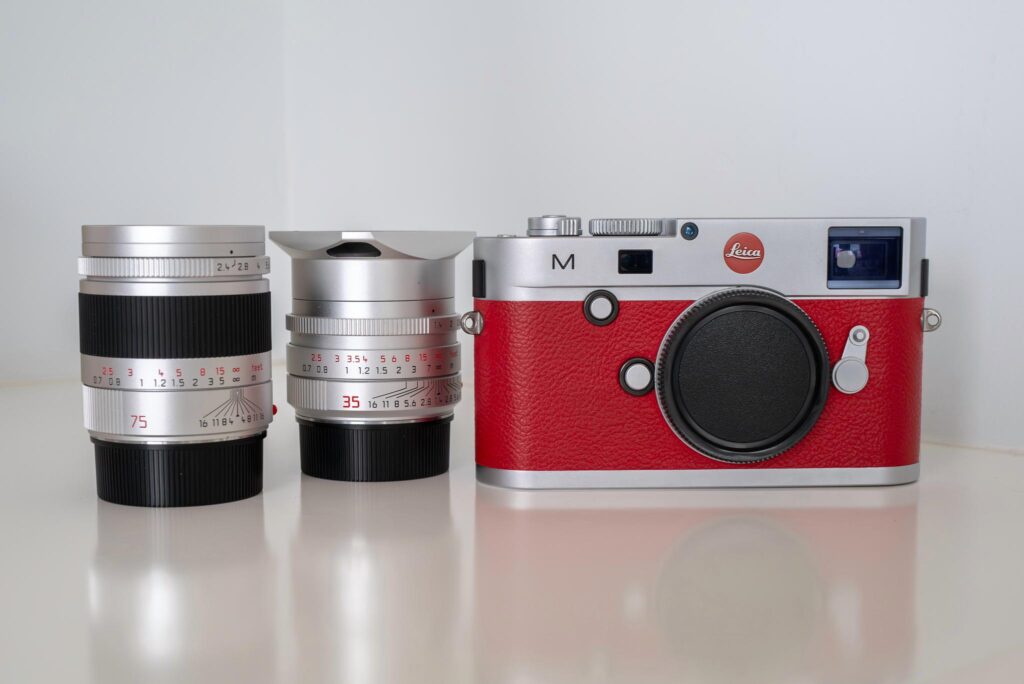
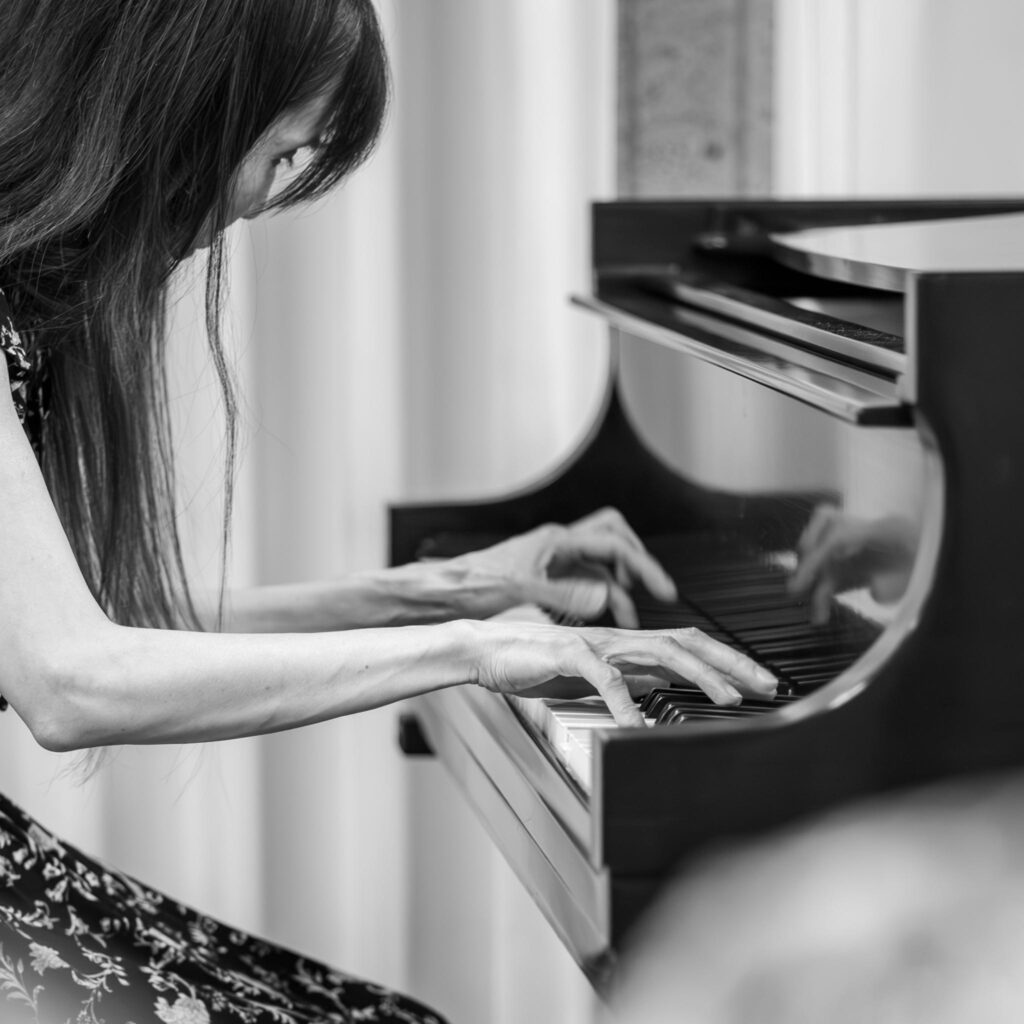
Well,
I have quite a few lenses for my Leica M: a set that goes better on the M246 Monochrom, and a set that works better on the M240.
When I leave home I just bring with me one camera with one lens.
Having too many options gets distracting, but going on a longer trip is different, and it’s when headaches start.
For my last trip in Berlin I decided to go full Monochrom with the M246, I brought with me three lenses: 28, 35 and 50mm, plus a small flash.
Did I use all of them? Yes.
Could I have done all with just one or two lenses instead of three? Yes.
Did I lose a few color shots? Unfortunately, yes.
But it’s part of the choice of focusing on just one aspect and I don’t regret that choice.
That said, I spent maybe a bit too much energy on switching lenses, and the shoulder bag started to annoy me a lot after 22km on foot on one day (yes, I was there during the transportation strike).
On my next trip I’ll take only two lenses with me, arguably the 28mm and the 50mm, or maybe just one, and that would be the 35mm.
Hi Davide, many thanks for your input. I, too, have adopted the ‘one camera-one lens’ approach to my photo-walks. It was recommended by an earlier commenter, and think it’s a great strategy. Although I have now begun taking a few more options on trips further afield, I still set off from the hotel with just one camera/lens combo. I have found a 21mm wide-angle to be extremely handy as a single lens for city photography. Cheers! Keith
One thing I have learned doing street photography during an event: Shoot the crowd. Everyone else is shooting the event. You get some very interesting images of distracted subjects.
Thanks, Bill! Great suggestion. There are many events held in my neighborhood where I can put this advice into practice. Cheers, Keith
P.S. on trying an M10. Paralysis by analysis. I shot an M10 with a 35 ‘cron and was surprised that I managed to get a few shots I was prepared to share. I also enjoyed the feeling, albeit clumsy through lack of practice, of being more involved with what I was shooting. You do have to think along the lines of the quote from the great Wayne Gretzky “I’m going to skate to where I think the puck is going to be.” And thinking is what you have to do more of.
My building is right on the course for the Chicago Marathon so I thought it would be a good test of my skills to pan and focus. I got enough to think I could do this again and have a few keepers. I shot landscapes and loved the gradations of tones and colors from the M10. Obviously landscapes are easier with a rangefinder than shooting runners!
The challenge now is whether to sell the CL and lenses and buy an M of some description with maybe a 50 ‘cron lens to add to the Q2 which would stay as my security blanket, or simply upgrade the Q2 to a Q3 with everything else staying the same. But I hanker for the simpler experience I had when I owned an Olympus OM2 and the standard 50mm f1.8 lens.
You can see the paralysis…time for another mugs of tea I think.
Another cup of tea solves all problems. By the way, if you have an Instagram account, there is a hilarious feed called VeryBritishProblems. The author extensively considers the place of tea (and biscuits, and roast potatoes, and dustbins…) in British culture…
Thanks Keith, since I partially grew up in England (interpret that as you will) I have spent many hours warming the pot and brewing up solid mugs of Builder’s Tea, and also poured more tea for the vicar as well. It’s magical stuff!
Lovely looking camera. Having a camera that you like to pick up means you’ll use it more. Using it more means you’re more likely to get that great picture. Big fan of the M240 and yours looks great!
Thanks so much Edward! I absolutely agree that a camera you enjoy looking at, holding, and using is one that will see plenty of action. And, as you say, the more action, the more likely a great photo will result. As mentioned in the article, people regularly approach me when I am carrying it, wanting to know all about it. The other day a person stopped me and asked me what sort of camera it was and if it took good pictures. She had never heard of Leica. I reassured her that it took good pictures! All the best, Keith
I am utterly addicted to the newness of lenses I haven’t tried yet. Or whole camera systems for that matter or lenses I already bought once, but now with more experience think I need to buy again. It’s a returning cycle, and I have yet to settle at this point, I have decided to embrace it, rather than fight it. Hi, my name is Erwin and I am an addict.
Hi Erwin, I understand the first step on the road to recovery is the acknowledgement of one’s addiction, and so congratulations – your journey has begun… 🙂 All the best, Keith
My 2 lens kit is the same, 35mm (Summicron) and 75mm (Summarit f2.5) plus a 21mm Elmarit M with hotshoe viewfinder because 2 just isn’t enough. 😉
Hi Paul, were I to commit the grievous sin of adding a third lens to my kit, I am sure it would be a 21mm. A silver 21mm Elmarit would be just the ticket, in fact. I shall have to exert iron willpower and resist even checking availability and prices on the internet. Cheers, Keith
When I bought my first M I went with the 35/90 combo and it worked well. 35/75 might be even better. Even though I’ve used 28mm lenses, i don’t especially care for that focal length. i like a natural perspective with minimal distortion.That’s a great little kit you have there.
Hi Stephen, many thanks. I am really enjoying this little kit. Long may it continue! Cheers, Keith
Great to read how you are entering the rangefinder world, Keith. The 35/75 is a great combo. I, however, prefer 28/75 for even greater versatility. A silver Leica 28 might be hard to find, but there is a beautiful new Voigtländer around… And I promise you, it will NOT remain with TWO lenses… But for now, have fun with the Summarit. It is, like the whole series, underrated. Interestingly enough, the Leica fans began to discover these models right when they were discontinued. It feels a bit like with Leica’s APS-C cameras. I wrote a small obituary on the Summarits here, a well-read story to this day. In the article, I also come to the conclusion that the 35 and the 75 are the best Summarits.
https://www.macfilos.com/2020/04/06/farewell-to-the-summarits-good-and-faithful-servants-but-sadly-underestimated/. So you did it right. All the best, JP
Hi Joerg-Peter, and many thanks! I did in fact already link your ‘obituary’ within the article when I referred to reviewers regretting the discontinuation of the Summarit line. Let’s see how long my fixation on a two-lens kit lasts! You (and Dirk) will be the first to know if I relent and add an ultra-wide angle lens to my collection… Cheers, Keith
Keith,
I enjoyed your article. The M and M-P(240) are an economical path to enter the M digital system.
I was an early adopter and acquired a 75/2.5 Summarit #11645, the predecessor of your lens in 2007. I did not want to invest a lot of money in that focal length at the time thinking it would not be used as much as I had a 90mm as well as a battery from 21mm to 135mm. It is not rated as highly as the later 75/2.4 but I was pleasantly surprised and I often travel with it and a 35/2.0 Summicron Asph #11882 (1st version) in real chrome plated brass. When it was relatively new I sent it in under warranty as it was unscrewing when I focused. Focus is accurate.
One of the downsides to M camera photography is you have the “wrong” lens on the camera especially if you carry too many focal lengths on your person.
The Summarit series was an economical introduction for newcomers to the M system and sadly it was discontinued by Leica.
I miss real chrome lenses not “chrome” aluminum and painted or chromed base and top plates on M cameras that “brass” naturally not the metals used now.
Recently I had cataract surgery and had multi-focal lenses installed. The best aid to M camera focusing I have found.
Thanks again for your contribution Keith.
Ralph
Hi Ralph, many thanks! I read of the f/2.5 as I looked into my f/2.4 before buying it. The consensus seemed to be that they were pretty much indistinguishable optically. I am hoping my strategy of using just two lenses reduces the likelihood of having ‘the wrong lens’ on the camera when a photographic opportunity arises! All the best, Keith
Keith
This was a nice story of your journey into the M-system. And much more refined than the buy everything I see camera-junkie method I used.
I have had at least one lens of almost every M focal length; skipping 24 mm and 28mm. And I now think my kit is dialed in to what works well for me.
For the people I know that only carry two lenses they fall into two camps. A 28mm or 35mm for the short end, and a 75mm or a 90mm at the long end. Which seems to be popular combinations for most serious M users.
If I am only going to carry one lens, it will be a 35mm. As this is a good compromise between wide and normal for many of the subjects I look for.
Though, as a general rule I carry 3 lenses; a 21mm, 50mm, and a 75mm. This gives me good versatility for over 90% of the subjects I look for when traveling or practicing street photography.
My practice with this kit is to decide on a lens and work with that for a certain amount of time. Then select a different lens, and walk about the area again. If something comes up I make the best image I can with the lens on the camera.
PaulB
Hi Paul, many thanks! I really like your approach of walking around with a given lens and then walking around the area again with a different lens fitted. That would certainly avoid a lot of lens changes mid-stream, and put the emphasis nicely on scenes that utilize the field of view of the lens that happens to be on the camera. I will definitely be giving this a try. All the best, Keith
A very fascinating article on your trajectory, which I think might well be applied to other cameras than a rangefinder.
Hi John, I agree! Whether you call it a strategic, or minimalist, or even ‘focused’ approach to buying lenses, the principle should indeed apply to most camera systems. Cheers, Keith
Dear Keith,
we still remember the warm welcome at Coronado and the lovely concert at Spreckel’s Park. What a joy.
I’m glad that I could convince you that -2dpt would be just fine. I could never have achieved that by an online discussion. And the Summarit…, I guessed that you would love it and think it is a good choice.
Carry on, and still, you will be collecting more lenses.
Many, many greets
Dirk
Thanks Dirk for all your help on these first steps into the rangefinder world! Feel free to bring yet more of your M-lens collection when you come to visit next time! All the best, Keith
Thank you for your inspired „take“ on an age-old Leica question. It is more acute with Leica Ms than other cameras, because of the limitations of frame lines in the rangefinder, assuming one does not wish to use Live View or an external VF here.
I am today thinking about this very subject, with regards to which lenses to take the the LSI Annual Meeting. I have been thinking 50 and 28, unless Light Lens Labs comes through in the next few days with their replica of the first aspherical 35/1.4 for me to test. Then, I am not sure. I find that with my M10s, there are enough pixels available for me to crop a 50mm image successfully to 75mm or 90mm equivalent. I used to have the first 75/1.4 but it never focused accurately for me, despite work upon it by Wetzlar. Now, no 75s. I do have a 90mm Apo Aspheric, but those, including mine, typically do not focus totally accurately via RF on a digital body.
So 50 and 28, or possibly 50 and 35. Every time I read about the lovely 75/2.4, I wish I had one. Does yours focus accurately wide open at all distances as seen by the RF?
Ed
Many thanks Ed. Yes, my 75mm f2.4 focuses very accurately with the rangefinder. In a high resolution JPEG, the image of the pomegranate I included is extremely sharp at f/2.4. The photo was taken at or very close to the minimum focusing distance of the rangefinder. You can see the fine details of its surface. I focused using the sharply-defined edge of the fruit, and since it is spherical, the very center of the fruit is not sharp, because it lies outside the 0.55 cm depth of field at that aperture and distance.
The photographs of the musicians were taken wide open at a distance of more like 15-30 m. Again, in a high resolution JPEG, they are extremely sharp.
I highly recommend this lens!
All the best, Keith
Great read, and congrats on your, indeed, handsome setup.
Another Leica shooter in CA here. My lens kit has evolved and is now, for me, perfect. I have lenses at the 21, 28, 50 and 90 FLs. My favorites are the 28 and 50 Luxes, however, I typically don’t select them when traveling. I’m a big fan of wide angle, so the compact and powerful 21 SEM is always in the bag, along with the latest 28 Elmarit-M. I’m happy with those, but will sometimes add the 50 Elmar-M depending.
The Luxes still get the most use for local outings and general family shooting, but it’s small and light when traveling for me.
Hi Chris, many thanks! Glad you enjoyed it. Thanks for the information about your lens set up. I get the impression that the 28mm /50mm pairing is a more popular choice than 35mm/75mm. Since I have 28mm covered with my Q2, I picked 35mm as my anchor focal length.
Do you use Live View or an accessory EVF when you use your 21mm or 90mm? I understand that some photographers can envisage what a 21mm field of view would look like even though they can only see 35mm frame lines. My lens coach, Dirk, let me try an 18mm and the resultant images were great. I did not have enough time with the lens to compare the image through the rangefinder with the image actually captured. I hope to try that again sometime.
All the best, Keith
Hi Keith,
I use the 21/28 Brightline finder, which is excellent with the 21, and also the 28s. It’s beautiful to look through.
I, too, often use the 35mm + silver 75mm Summarit combination. The silver Summarit 75mm is so compact, and very sharp. A very good focal length combination and very easy to carry with one lens in a small “belly bag”
Hi Bill, it’s encouraging to hear that you also employ and enjoy this lens combo. As I said in the article, I am tremendously impressed with the 75mm Summarit. It seems to be a little underappreciated in the Leica world – very few reviews online, and not that many (used models) available in Leica stores. All the best! Keith
Lovely article – brought a chuckle! Thank you!
There really as you imply two components to this: which lenses to acquire, and which lenses to take with you.
Arguably which lenses to buy gets easier, the more lenses you buy – you are simply filling in the gaps until every square is painted in.
Conversely the more lenses you acquire the greater the anxiety about which lenses to take with you and which to leave at home. And that’s before the weight of all that kit becomes a PITA.
If I take out my CL I will take no more than two lenses to avoid indecision and weight, and these days I’ve got that process down.
And as I’m about to try out an M for the first time, this (in)decision process, not including the cost of parting with a kidney to pay for it, might make the process more complicated.
At that point decisions like “Window or Aisle?” would appear to be simple…
Hi Le Chef – thank you, I am glad you enjoyed it. To date, before buying the rangefinder, I had acquired a few lenses for my other cameras in rather haphazard fashion. I therefore decided to start this M-camera/lens adventure with a clean slate and take a more methodical approach. Let’s see how long it lasts! I look forward to hearing of your exploits with a rangefinder, if you decide to bite the bullet and jump in. Cheers, Keith
I borrowed an M10 and a 35 ‘chron from my very helpful AD here in Chicago. Not much time to really work with the camera as I had to take Her Ladyship to O’Hare as she heads off to Tuscany with six other “mature” ladies. If you can conjure up the sound track from “The Magnificent Seven” you can imagine my trepidation…When I got back it had turned into one of those dramatic weather days over the lake. But more on that on another day.
Without going full “street” so far using the rangefinder seems not too difficult. Seeing the lens out of the corner of the viewfinder is distracting though compared to an EVF. I also took along my Q2 to see what that would be like in comparison. Easier in some ways, but the test will come attempting street photography with the M10. That will happen Sunday morning as the Chicago Marathon runs around our building; so I can stand outside the “front” door and try and capture the runners. I’m sure there will be many failed shots and many cuss words in the process!
I’m currently processing images from today’s shots with the M10 and Q2 in Lightroom so it will be interesting to compare them.
You’re a brave man indeed taking a untried rangefinder to capture a race (and we won’t even mention letting the ladies set off for Europe with a charge card: I know the kind of damage I could do!)
This past summer I was trying to capture a dance competition using manual focus. As I learned only too late, there are tricks rangefinder users more practiced than I use. One was to kick up the ISO and hit the high f-stops. The second was to prefocus on one spot, and wait until the dancer moved into that spot.
I have to admire all those heroes who lived before autofocus!